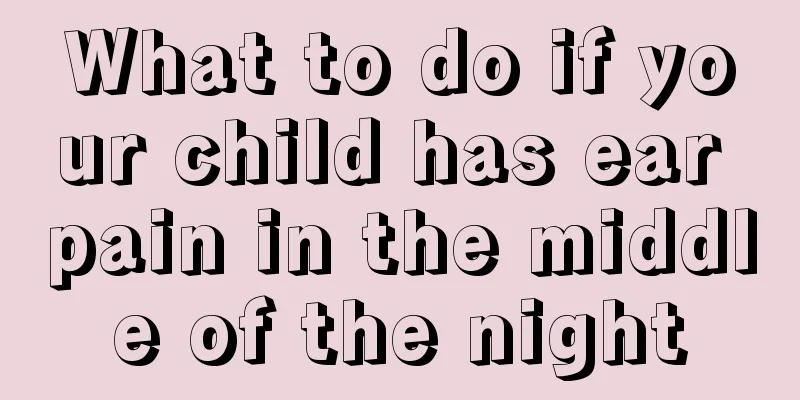What happens if a child has hemangioma?

|
Children are the most important part of every family. Without children, the home will have no homely feeling. So in every parent's heart, everything about their children is very important. The health of their children is always on the minds of parents. Today I want to give you some knowledge about children's hemangiomas. I believe parents will be very willing to learn about it. What are the dangers of childhood hemangioma? Hemangiomas in children appear at birth or within 1 to 2 months after birth, often on the head, face, and neck, affecting the baby's appearance and causing concern for parents. With the patience of parents and close cooperation with doctors, active treatment can cure the disease. However, dangerous childhood hemangiomas, such as those growing in the eyes, throat, and extremities, require special attention. Children's hemangiomas are divided into a proliferative phase, a stable phase, and very rarely, a regressive phase. If the hemangioma is in a stable period, it is easy for parents to ignore it and think that the hemangioma will disappear on its own. However, hemangioma has several growth peaks: 1. The patient's growth peak period is from 1 to 6 months after birth, and the hemangioma growth is in a stable period after 1 year old. 2. Patients between the ages of 12 and 18 are in puberty. Due to rapid physical development, changes in hormone levels in the body can cause hemangiomas to grow rapidly. This is something parents often ask doctors in clinical practice: "I didn't notice it before, but now that the child is older, I find that it's growing very fast and is accompanied by swelling and pain." 3. Before and after marriage, especially during pregnancy and childbirth for lesbians, the original hemangioma will rapidly grow in size, and some may even become infected and rupture. There are many examples of this in clinical practice, which cause great pain to patients. 4. When women enter menopause, they sometimes unconsciously find a lump on a part of their body. In a week, it can grow to the size of a fist and have a hard texture. It is sometimes suspected to be a malignant tumor. Patients bear tremendous pressure. With age, people age and their immune function decreases. Hemangiomas can also grow rapidly at this time. Therefore, hemangioma should not be taken lightly. Once discovered, it must be treated promptly to avoid missing the best time for treatment. Parents of children with hemangiomas should pay enough attention and realize the dangers of hemangiomas in children. For the long-term health of their children, they should first understand the child's condition, consult in detail with doctors who have rich experience in treating hemangiomas, understand the advantages and disadvantages of relevant treatment methods, and have a clear idea of the situation so as to avoid detours and spend less money. In the past, many people mistakenly believed that most vascular lesions would resolve on their own within a few years after birth and did not require active intervention and treatment, which led to misdiagnosis and missed the best time for treatment, resulting in serious deformities and functional disorders. In long-term clinical observations, we found that only a very small number of strawberry hemangiomas can regress, while the others will never regress throughout their lives. Through continuous research and treatment, we found that hemangiomas should be detected early and treated in a timely manner, and the traditional view should be changed. So when should hemangiomas be treated? How to treat it? Comprehensive treatment should be adopted for the treatment of pediatric hemangioma. Most hemangiomas in their early stages, such as port-wine stains, capillary hemangiomas, and cavernous hemangiomas, can be observed dynamically. That is, go to the hospital for follow-up by a pediatric surgeon every 3-6 months to observe changes in size, color, and thickness to decide whether the hemangioma can be waited for to resolve on its own. This is generally suitable for children under 2 years old with hemangiomas. Laser treatment is generally suitable for port-wine stains. Application and injection are suitable for simple capillary hemangioma and smaller and thinner cavernous hemangioma. Drug injection therapy is suitable for smaller cavernous hemangiomas, and commonly used drugs include bleomycin, triamcinolone acetate, methylene blue, OK432, etc. For cavernous hemangiomas and arterial hemangiomas that grow quickly, pose a risk of disfigurement, or are large, surgical resection or combined injection therapy can be chosen early on. Giant cavernous hemangiomas with thrombocytopenia are best treated with oral prednisone. In short, if a child has a hemangioma, there is no need to be anxious or worried. The treatment method should be decided according to the different types. Most hemangiomas can resolve on their own. If this awareness is lacking, treatments such as surgery, freezing, laser, radiation, sclerosing agents, hormones, etc. will be used, which will not only cause unnecessary pain to the children, but will also bring many sequelae, destroy their appearance, and have a recurrence rate of about 30%. Some hemangiomas will not regress, such as port-wine stains, racemose hemangiomas, and lymphangiomas. They can exist for life. They usually occur at birth and grow slowly in proportion to the child's age. They should be treated actively early. Therefore, children with hemangiomas should go to the hospital for consultation with a specialist to determine the type of hemangioma and then consider when and how to treat it. Most hemangiomas in their early stages, such as port-wine stains, capillary hemangiomas, and cavernous hemangiomas, can be observed dynamically. That is, go to the hospital for follow-up by a dedicated doctor every 3-6 months to observe changes in size, color, and thickness to decide whether you can wait for it to resolve on its own. It is generally suitable for hemangiomas in children under 2 years old. Laser treatment is generally suitable for port-wine stains. 90sr patch and P32 injection are suitable for simple capillary hemangiomas and smaller, thinner cavernous hemangiomas. Cryosurgery, especially cotton swab cryosurgery, is most effective in treating hemangiomas in children under 2 years old with simple capillary hemangiomas. Sclerotherapy injection is suitable for smaller cavernous hemangiomas. Commonly used drugs include 5% sodium morrhuate solution, Feiningketong A, Debuconazole, Pingyangmycin, and triamcinolone acetate injection. For hemangiomas that grow fast, pose a risk of disfigurement, or are large, electrochemotherapy, bleomycin injection, and early surgical resection can be used for treatment. If the resection area is too large, a skin expander can be used locally or copper wire can be used to ligate and block the communicating branches. Giant cavernous hemangiomas with thrombocytopenia are best treated with oral prednisone. Every parent hopes that their child can grow up healthy. Therefore, parents are also very worried about their children during their growth. Therefore, when parents have free time, they should learn more about this aspect in case of emergency. |
<<: What should you pay attention to when your child is changing teeth at the age of six?
>>: How can children nourish their brains?
Recommend
What causes indigestion in children?
In life, our mothers may not give their children ...
What to do if your child speaks with a lisp
As children grow older, the time for them to lear...
What common diseases are associated with children not speaking?
Children's speech is generally regular, and t...
Do newborns need facial cream?
In our lives, many newborn babies have particular...
If a child has tooth decay pain, distinguish the severity and then treat it
Children love candy, so tooth decay is a common p...
Child's head capillary dilation
Children often have fair skin because they rarely...
Symptoms of intrauterine pneumonia in infants
When taking care of their babies, new mothers mus...
What is the cause of baby's hand dislocation?
Babies of a few years old are still in the best s...
Can a one-year-old baby clean earwax?
Many young mothers are very careful when taking c...
What to do if your child has cough and asthma
The symptoms of cough in young children cannot be...
Early education for 10-month-old babies
Nowadays, there are many early education institut...
Why doesn’t an eight-year-old child have his teeth changed yet?
Tooth replacement is something that all children ...
What is a febrile seizure in a child and what to do
Febrile convulsions are the most common cause of ...
Why does the child keep blinking?
As a child grows, new problems may arise every da...
What should I do if my 9-month-old baby has a poor appetite?
If the baby catches a cold, he will have a poor a...









